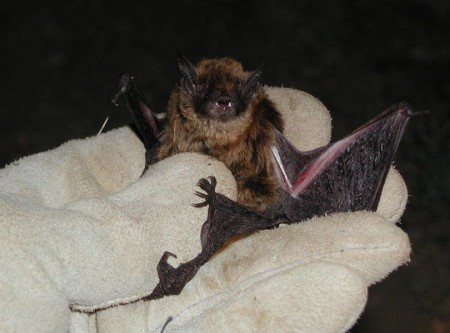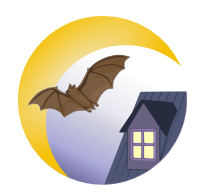Long-legged bat

Credit: Tanya Dewey
Latin name: Myotis volans
Average size: Total length of 7-11 cm
Wingspan: 21-27 cm
Weight: 5-10 g
External characteristics: The long-legged myotis is one of the largest species in the Myotis genus. Its common name, is derived from its relatively long tibia and relatively small feet. The fur colour of its back varies from reddish-brown to nearly black, while the fur on its underparts is relatively dark. The fur on its stomach extends to the undersides of the wing membranes in between the knees and elbows. Its ears are relatively short with rounded tips and they barely extend to the nose when pushed forward. The tragus is long and narrow.
Habitat: The long-legged myotis inhabits western North America. It typically occupies mountainous or relatively rugged areas. This species often resides in coniferous forests, although they are sometimes found in oak or streamside woodlands, and even deserts. During the summer, the long-legged myotis roosts in buildings, crevices in rock cliffs, fissures in the ground, and under the bark of trees. At night, it uses caves and mines for roosting. During the winter, it hibernates in small clusters in caves and mines.
Reproduction: Mating occurs before the bats enter hibernation in late August or September. Females produce a single offspring between mid-June and July.
Seen in: Alberta, British-Columbia, Northwest Territories, Yukon

